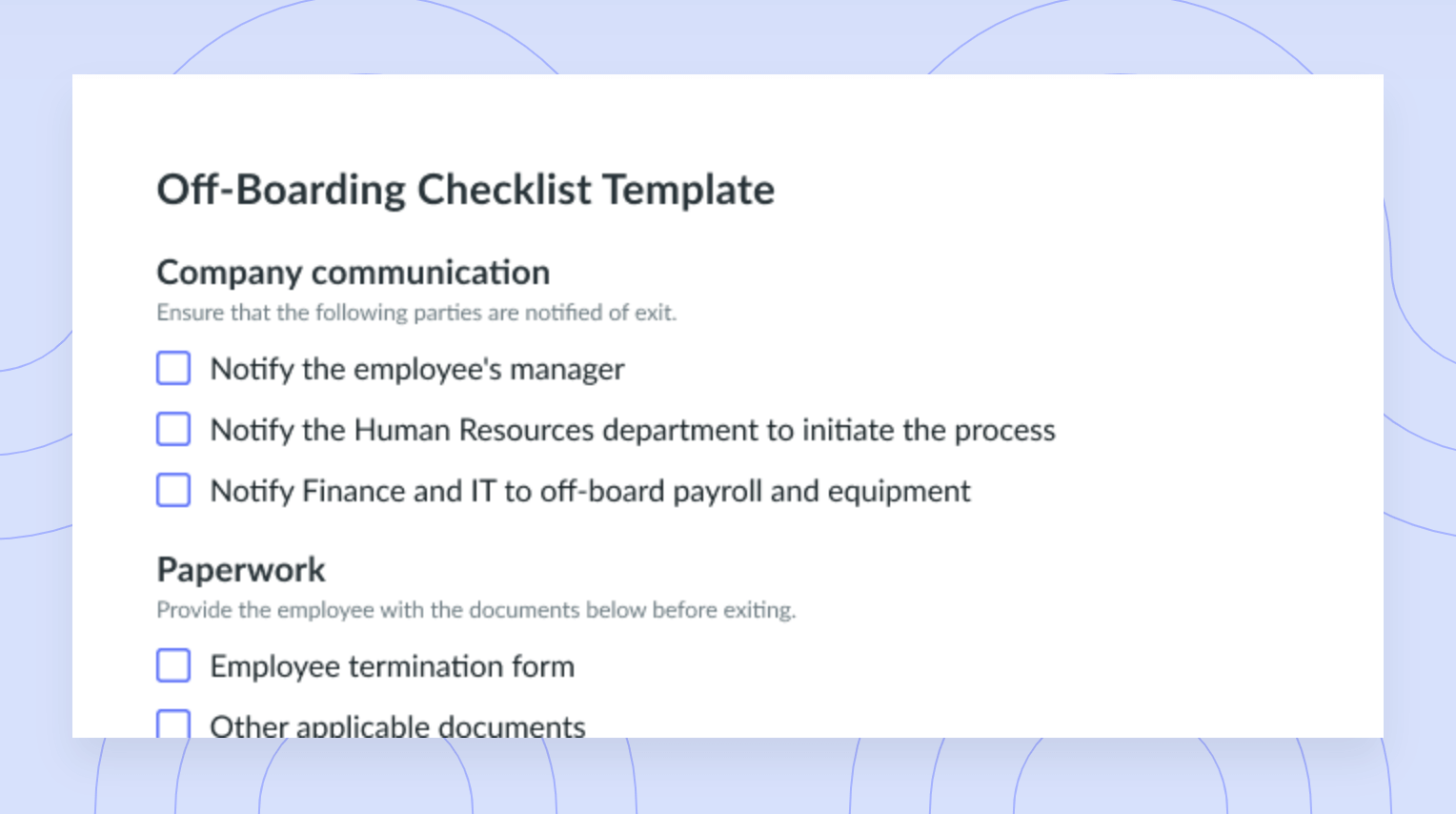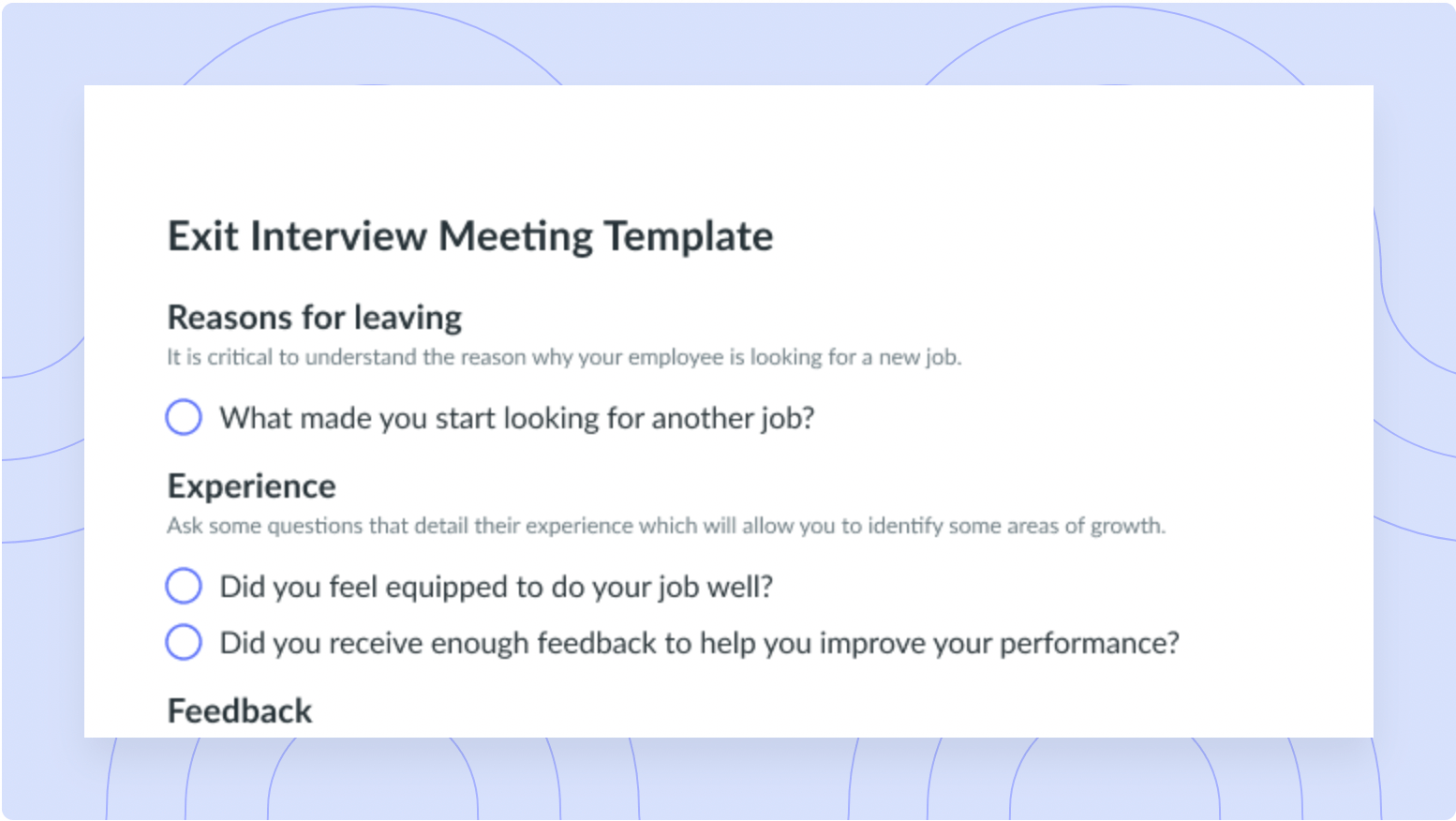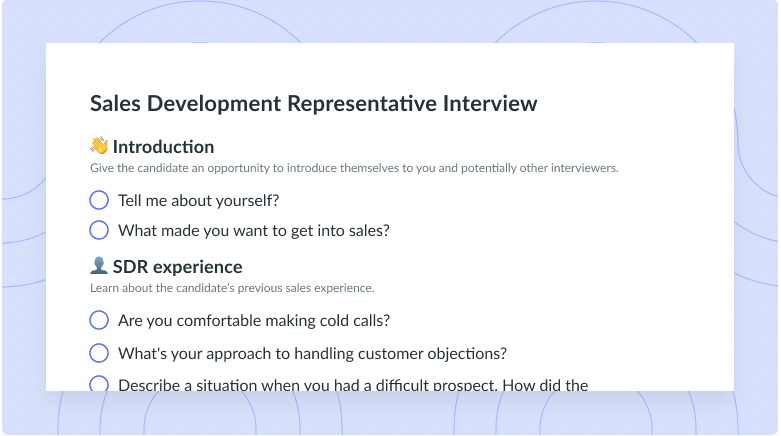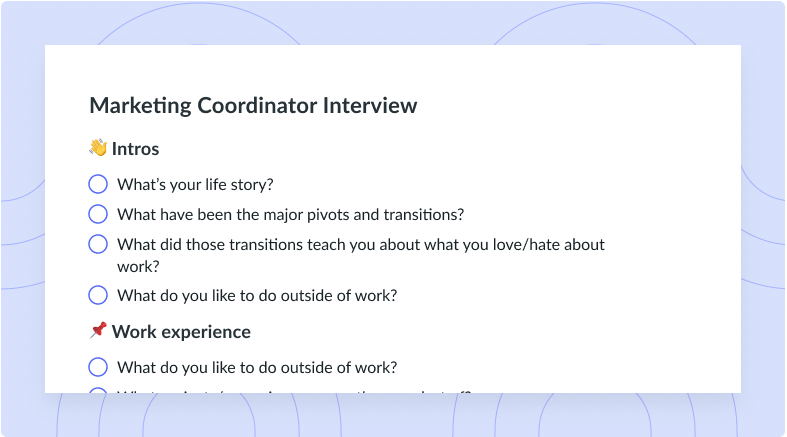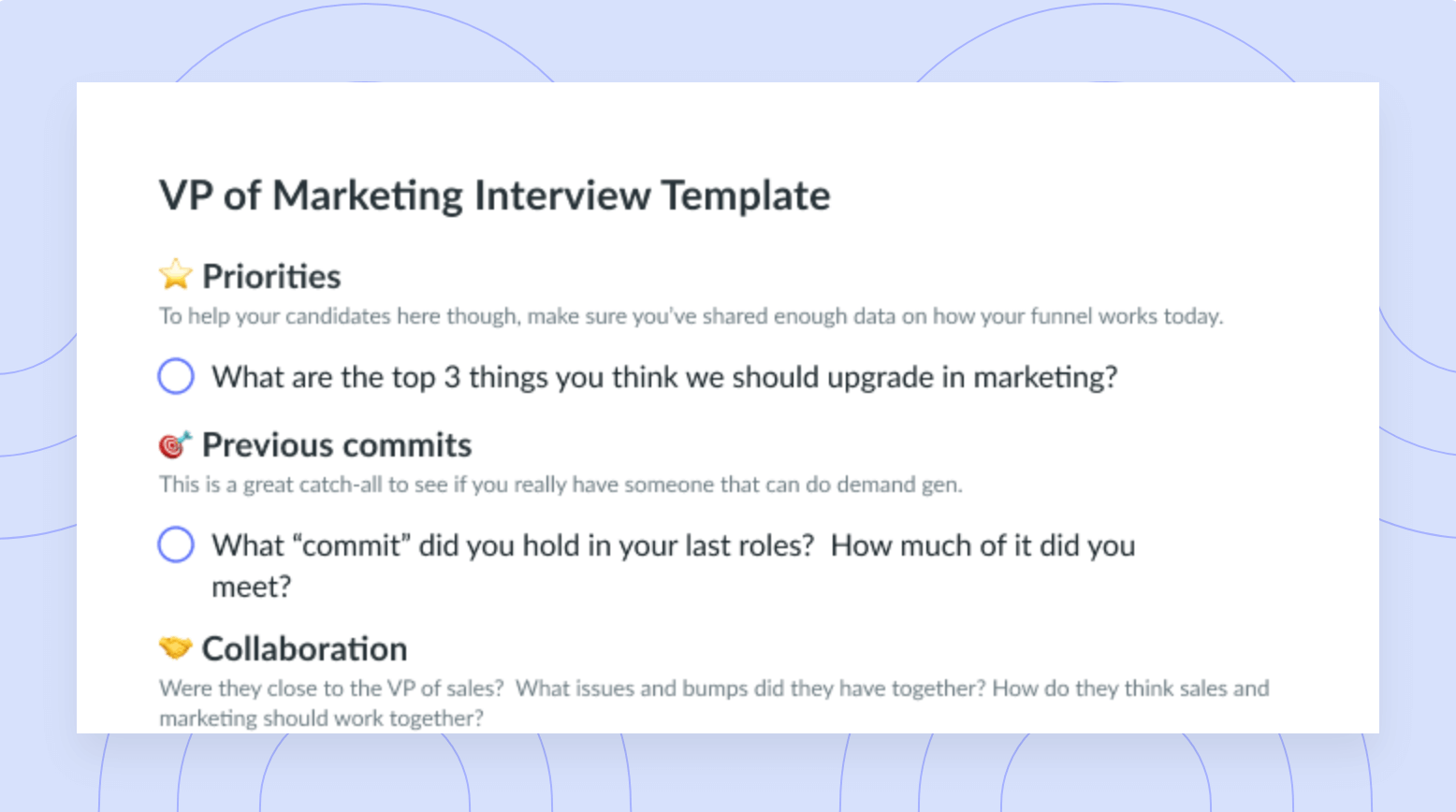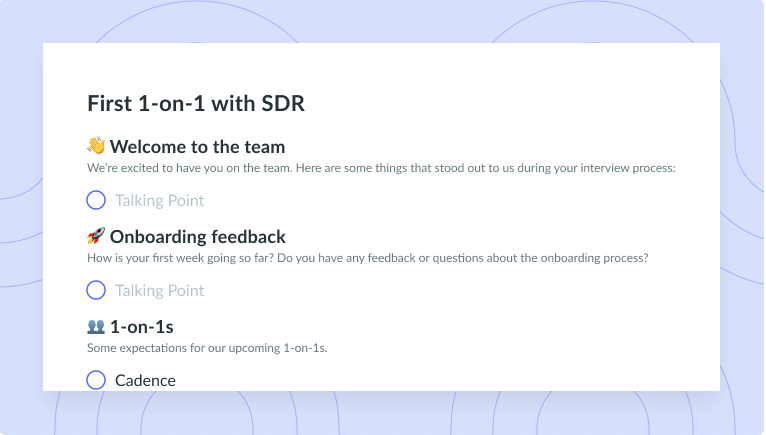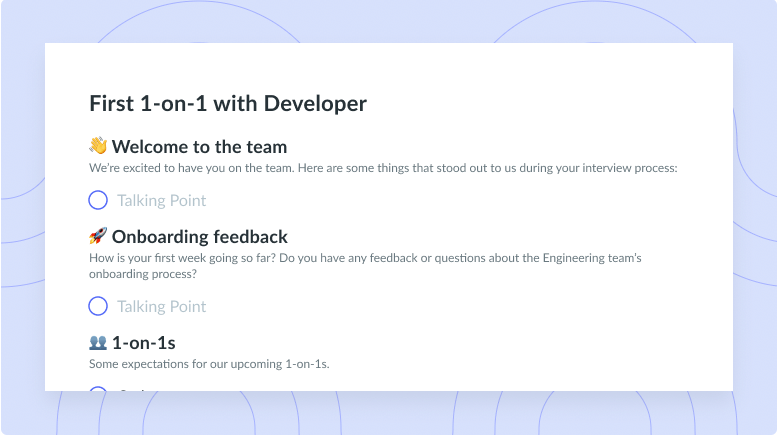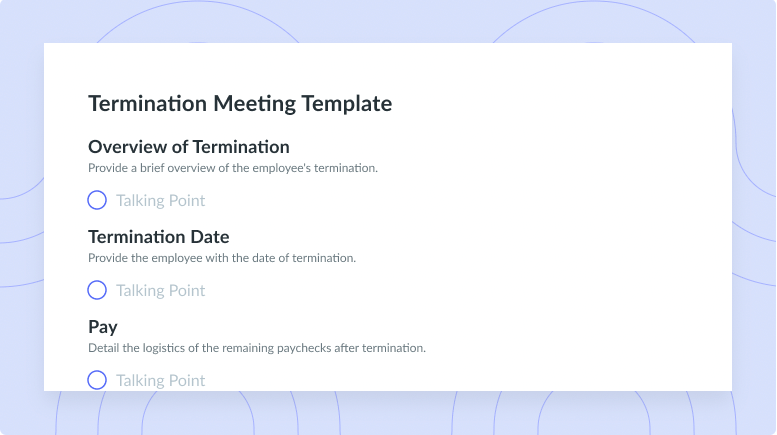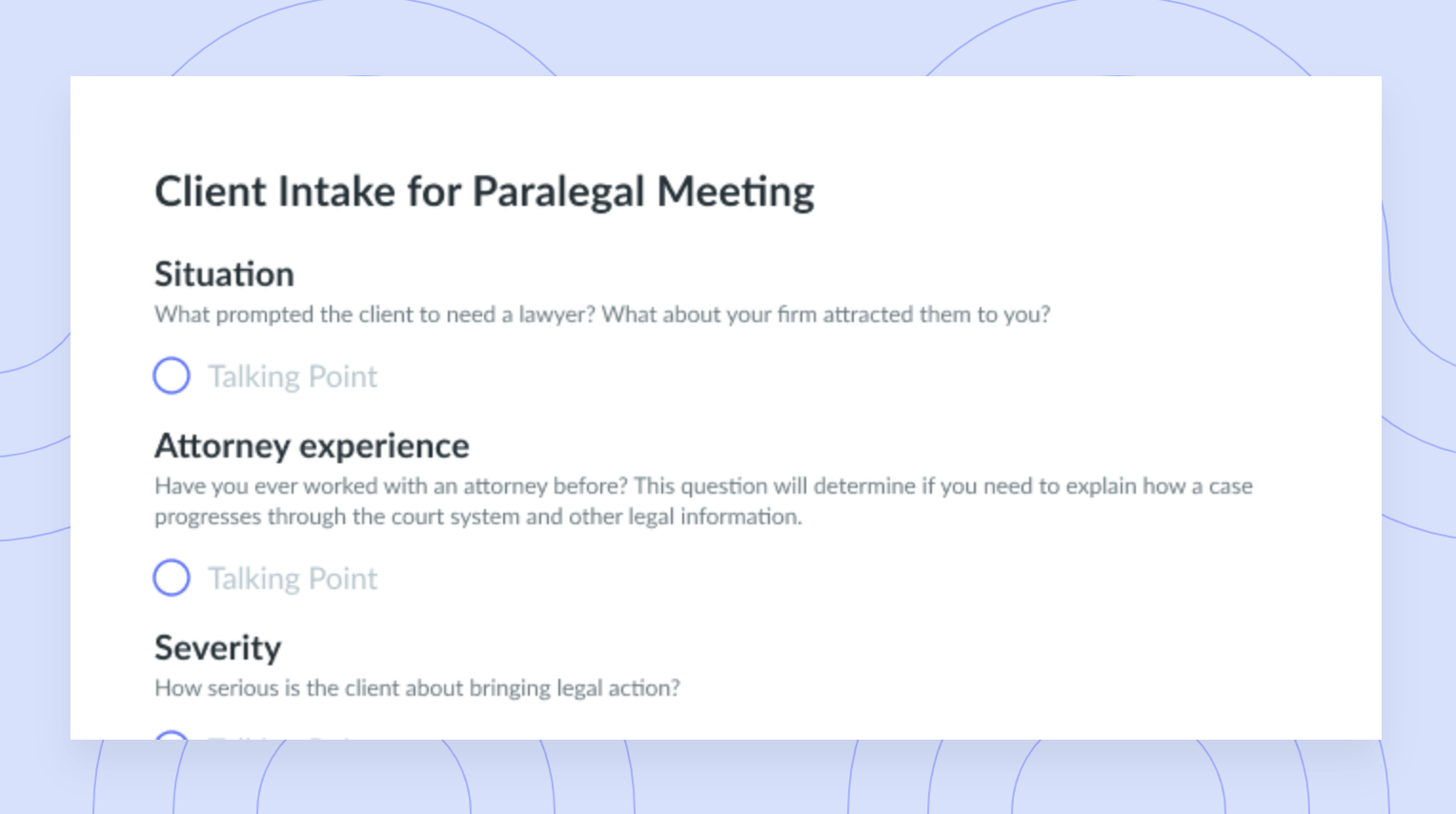Exit Interviews: 7 Best Practices and Precautions for Leaders
You’ll never know for sure why an employee has chosen a role elsewhere unless you find out. Here are 7 best practices to follow during an exit interview.
There’s always a reason for an employee leaving their job.
Maybe it was due to an abrasive or under-trained manager. Or perhaps it was because they were looking for a role that offered more work-from-home opportunities. And of course, it could have been simply for a higher paying salary.
Whatever the case may be, you’ll never know for sure why an employee has chosen a role elsewhere unless you find out. And the best way to find out is in an exit interview.
- What is an exit interview?
- What are the benefits of exit interviews?
- How do you prepare to conduct an exit interview?
- Exit interview best practices
- Free exit interview template
What is an exit interview?
An exit interview is a meeting that takes place between an employee who is leaving an organization and a member of the human resources team. The goal of an exit interview is to tactfully handle their resignation by finding out the reasons why an employee is leaving the company. This feedback is crucial to improving the workplace as a whole, making adjustments to company culture, or making changes to the employee’s department so this doesn’t continue to happen in the future.
Essentially, think of an exit interview as the opposite of a job interview, instead of asking why they’d like to join your company, find out why they decided to leave.
What are the benefits of exit interviews?
When done correctly, exit interviews can offer an organization many benefits. Some of these are:
- Gives everyone involved an opportunity to have an open and honest conversation about the organization and what is working and what isn’t.
- Provides a better look at retention issues the company may be facing.
- Learn about any gaps within a specific role and if there are areas for improvement.
- Allows the company to find how they can keep their best employees and attract more.
- Using the data collected can help measure the mood, impression, and sentiment the company has on its employees.
- Gaining an inside look into team dynamics, both with coworkers and with the manager.
- Leading the way into amicable parting between the employee and the organization.
- Providing the answers to the tough questions about the company that current employees may be hesitant to answer.
How do you prepare to conduct an exit interview?
When you conduct an exit interview, there are specific ways you can prepare ahead of time.
- Send out the interview details soon as you can. Don’t wait until the employee’s last day with the team to let them know that an interview will occur. As soon as you’re notified of an employee putting in their (hopefully!) two weeks notice, find a time to hold the interview as close to their last day as possible.
- The HR professional handling the exit interview should also learn as much about the employee, their department, and their role as possible. Knowing their responsibilities and how they contributed to the company will make the interview more effective. It’s also a good idea to understand details like how long they were at the company and any record of complaints or disciplinaries made against, or raised by, the employee.
- If possible, make this meeting face-to-face. If it is, make sure the conference room or interview location is private and secluded enough where the employee doesn’t feel like they’re being watched. And, whether it’s face-to-face or virtual, block enough time so that the employee doesn’t feel rushed and they have enough time to say everything they’d like to say.
Being prepared ahead of time is your best bet to get as much feedback as possible from the employee and know the most relevant questions to ask.

Exit interviews shouldn’t be dreadful.
Prepare to have an open and honest conversation during an exit interview and show up prepared to take notes with Fellow.
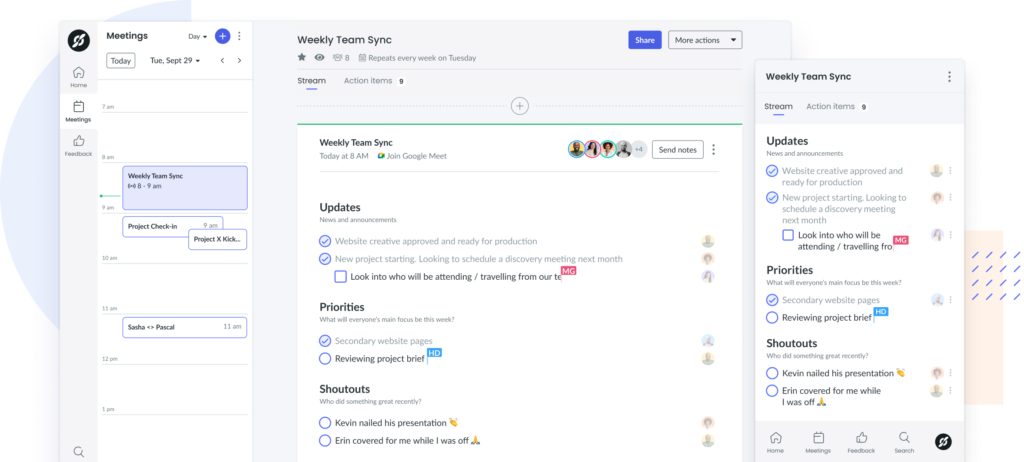
Exit interview best practices
Effective exit interviews follow these seven best practices to be as successful as possible. Before you roll up your sleeves and walk into the exit interview, review that you’ve done the following for it to be a productive conversation.
- Communicate the purpose upfront
- Have someone else run the meeting
- Send questions in advance
- Ask for feedback
- Make it a positive experience
- Take detailed notes
- Implement the feedback
1 Communicate the purpose upfront
As you let the employee know the time and place for their exit interview, you should also let them know the purpose of the interview upfront. Convey that the point is for them to provide feedback about their manager, department, or the entire company to learn more about their experience during their time working there. They should also know this isn’t the time or place for company gossip or to talk poorly about specific team members.
2 Have someone other than the manager run the meeting
Do you want open and honest feedback from the employee? You won’t get it if their manager is leading the meeting. You also won’t get it if their manager is present in the meeting.
If their manager feels like they have to be in attendance, the HR professional leading the exit interview should let them know they can come in for ten minutes at the start or ten minutes at the end. Whatever the case may be, they shouldn’t be in charge of running the interview.
The HR professional leading the meeting should be trained to take the feedback and put ways to improve the department or company to action. They can also provide an unbiased atmosphere for the employee to feel comfortable enough to share their thoughts.
3 Send questions in advance
As you prepare ahead of time for the interview, have a list of questions ready that you’ll be asking the employee. Once the list is complete, send them to the employee to prepare ahead of time too, which will encourage their participation.
Typical questions asked during an exit interview are:
- Why are you choosing to leave the company?
- What are some things you feel the company is doing right?
- What are some things you feel the company needs to change, fix, or improve?
- What are your overall thoughts about working here?
- How would you improve the organization if it was up to you?
- Do you have any specific thoughts about your manager or the department you worked in?
- Do you know if other current employees feel the same way as you do?
- If you could change anything about employee orientation or onboarding, would you? If yes, what specifically would you change?
- Who are some managers, employees, or executives who have impacted you positively? How and why?
- What are your favorite things about your manager, supervisor, or team in general?
- What was your favorite thing or your favorite memory about working here?
- Are there any ideas you wish you could have implemented during your time here?
Employees should also be told that they can decline to answer any of these questions if they don’t feel comfortable sharing.
4 Ask for feedback
It’s an important step to properly convey to the employee that you’re looking for as much feedback as possible throughout the interview. They should know ahead to come prepared with suggestions, ideas, or ways to improve the organization once they have parted ways potentially.
In addition to the exit interview, you may also want to consider asking the employee to complete an off-boarding survey for additional feedback.

5 Make it a positive experience for the employee
An employee should never dread their exit interview – it should be a positive experience complete with open and honest feedback. The HR team member leading the conversation should never make the employee feel bad about leaving or make them feel guilty for looking for work elsewhere. Additionally, the meeting leader shouldn’t use this time to ask the employee to reconsider leaving.
The conversation needs to be casual and the employee should never feel like they’re being ganged up on. Employees sometimes worry about burning a bridge after leaving an employer if they speak up about certain details that aren’t working or provide brutal honesty. Making the conversation comfortable helps to build trust in the process.
6 Take detailed notes
While the employee is sharing with you and answering the interview questions, take detailed notes on what they have to say. Don’t feel like you should respond to everything they say, but instead listen more than you talk and take as many notes as possible.
The goal here is to learn as much as you can about the employee’s experience and journey at the organization and record the findings with as much detail as you can.
7 Implement the feedback
No matter what was said in the exit interview, it’s an absolute must that the feedback be implemented. Otherwise, what was the point?
The employee’s suggestions during the interview can provide key insights into gaps within the structure of their department or be ways to improve the company culture. If the ideas were specific to ways to improve their department, share them with their manager and the department director — especially if they noted they’re not the only ones who feel this way.
Once the interview has come to a close, share the key points and suggestions from the meeting with the employee’s supervisor or to the next level when the feedback is relevant. Also, if you find yourself constantly holding exit interviews with employees from the same department, look for trends in their feedback, so the pattern doesn’t continue. The notes you’ve taken in step six can help you here.
Free exit interview template
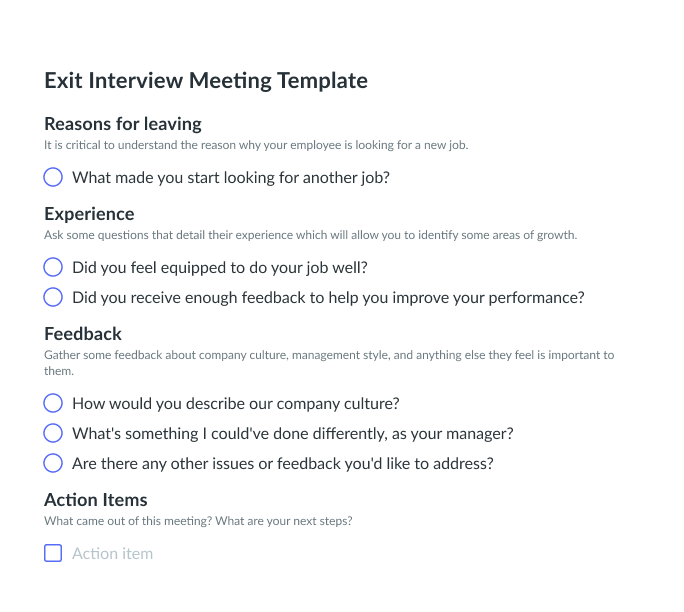
Finding the good in goodbye
It’s never fun to have an employee leave your company. But, when you conduct a proper exit interview, you can, at the very least, learn what caused them to look elsewhere. Remember that you can’t expect an employee to stay forever, and at the end of the day, they need to find the best fit for their needs. Don’t take it personally!








